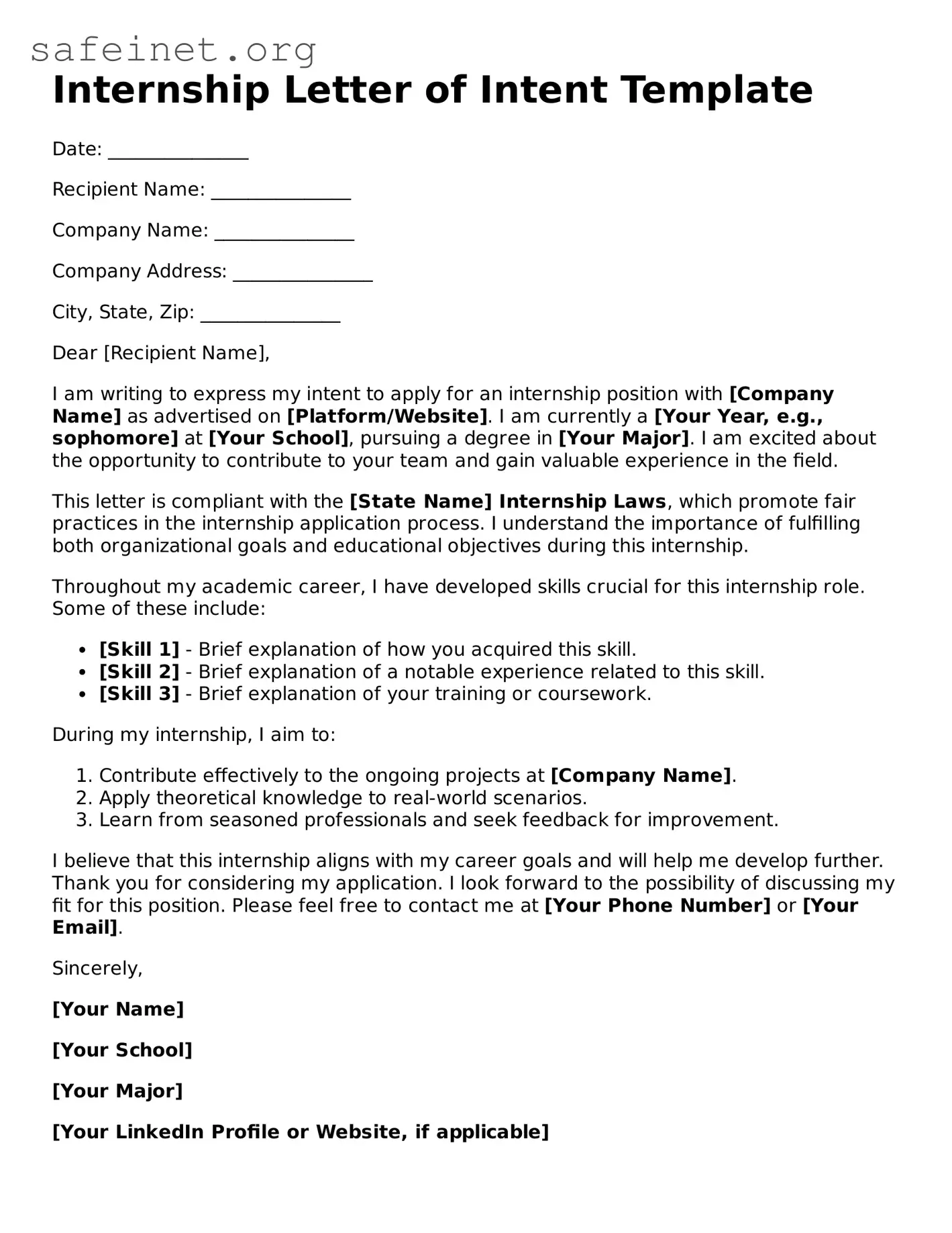What is a Letter of Intent for Internship?
A Letter of Intent for Internship is a document expressing your intent to apply for an internship position. It outlines your interest in the role and highlights your qualifications, skills, and what you hope to gain from the experience. This letter helps establish a connection with potential employers and can set you apart from other candidates.
Why do I need to submit a Letter of Intent?
Submitting a Letter of Intent can enhance your internship application. It provides an opportunity to convey your passion for the field, showcase your background, and explain why you are a good fit for the position. Employers often look for candidates who are proactive and demonstrate genuine interest, making your letter an important part of the application process.
What should be included in my Letter of Intent?
Your Letter of Intent should include the following elements: a brief introduction about yourself, a statement of your interest in the specific internship position, details regarding your relevant experience and skills, and a conclusion that emphasizes your enthusiasm for hearing back from the employer. Be concise and focused, as clarity is essential.
How long should my Letter of Intent be?
A well-crafted Letter of Intent should typically be one page long. Aim for 300 to 500 words. This length allows you to communicate your points clearly without overwhelming the reader. Be sure to use paragraphs effectively to ensure your letter is easy to read.
Is it necessary to address the Letter of Intent to someone specific?
Whenever possible, address your Letter of Intent to a specific person, such as the internship coordinator or hiring manager. This shows that you have done your research and are genuinely interested in the organization. However, if you cannot find a specific name, using a general greeting like "Dear Hiring Manager" is acceptable.
Can I use the same Letter of Intent for different internships?
While you can use a similar template, it’s crucial to tailor each Letter of Intent for specific internships. Customize the content to reflect how your skills and interests align with the organization and role you are applying for. Personalization demonstrates your commitment and can greatly improve your chances of standing out.
What tone should I use in my Letter of Intent?
The tone of your Letter of Intent should be professional yet approachable. Maintain a respectful and enthusiastic tone throughout the letter. Avoid overly formal language that may disconnect you from the reader. Balance professionalism with a hint of your personality to create a more engaging message.
How should I format my Letter of Intent?
Your Letter of Intent should be formatted like a business letter. Include your contact information at the top, followed by the date and the employer’s information. Use a standard font, such as Arial or Times New Roman, and maintain a clear structure with appropriate spacing between paragraphs. A clean and organized layout reflects your attention to detail.
When should I submit my Letter of Intent?
Submit your Letter of Intent as early as possible. Many internships have application deadlines, so aim to send yours several weeks before the due date. This allows time for any potential follow-up. Early submissions also show your initiative and can leave a positive impression on hiring managers.
What should I do after submitting my Letter of Intent?
After submitting your Letter of Intent, consider following up with the employer to confirm receipt and express your continued interest. Waiting approximately one to two weeks is appropriate. A polite follow-up can demonstrate your enthusiasm for the role and keep you on the employer's radar.
